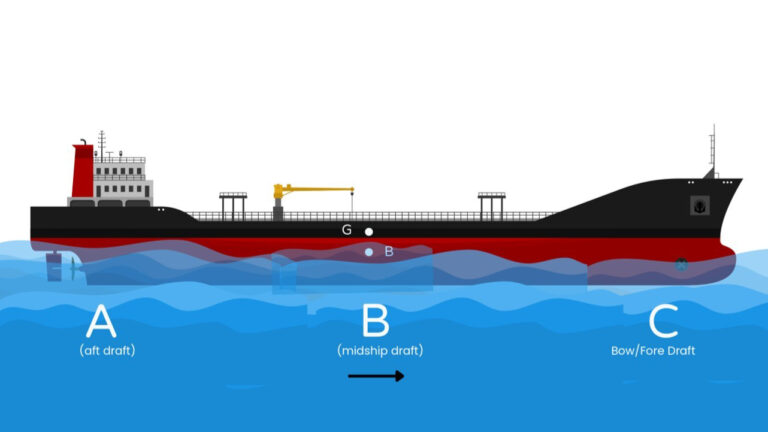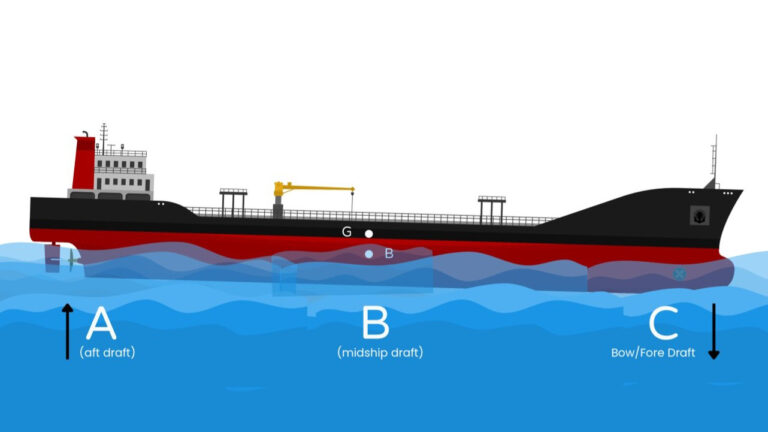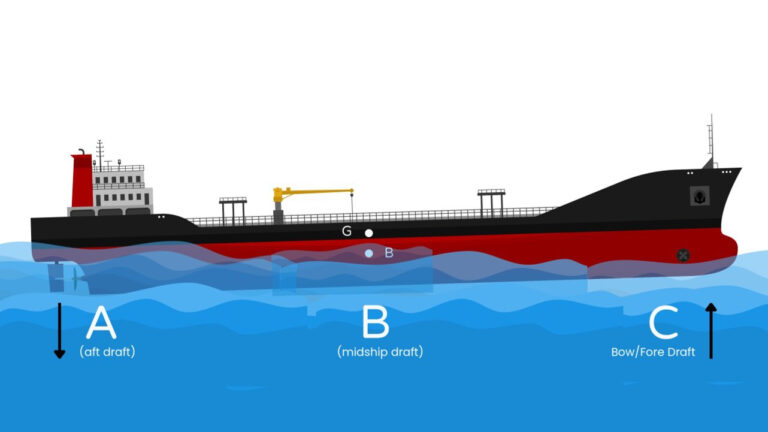Understanding Even Keel, Trim by Bow, and Trim by Stern
Significantly affects the ship’s stability, this article discusses the three main conditions: Even Keel, Trim by Bow, and Trim by Stern.
By Pranala Digital Transmaritim
22 January 2025
In the maritime world, maintaining a balanced ship draft is crucial for ensuring safety and operational performance. Draft refers to the depth of the ship submerged in water, and the balance between the forward draft (bow) and aft draft (stern) significantly affects the ship’s stability. This article discusses the three main conditions: Even Keel, Trim by Bow, and Trim by Stern.

Even Keel Condition (2025). Photo: Pranala Digital Transmaritim
Even Keel: Ideal and Stable Condition
Even keel is when the forward and aft drafts of the ship are equal. Technically, this means the ship’s keel is level with the waterline. This condition is considered ideal because the vessel remains balanced, without tilting forward or backward.
Advantages of even keel include:
-Improved sailing stability
-More efficient fuel consumption
-Easier and more responsive maneuvering
In other words, an even keel ensures the vessel operates under optimal conditions in terms of both safety and performance.

Trim by Bow Condition (2025). Photo: Pranala Digital Transmaritim
Trim by Bow: Ship Tilting Forward
Trim by bow (or trim by head) occurs when the bow is more submerged than the stern. This indicates the vessel is tilting forward.
Common causes of this condition:
-Uneven cargo distribution (heavier at the front)
-Unbalanced ballast adjustments
This condition is calculated using the formula:
Trim = A – C
Where:
A = Aft Draft
C = Forward Draft
Example calculation:
Aft Draft (A) = 7.0 meters
Forward Draft (C) = 9.0 meters
Trim = -2.0 meters → indicating trim by bow
A negative (−) value shows the ship is tilted forward. Although this may be acceptable within certain limits, it requires careful attention to avoid risks to the vessel’s structure and performance.

Trim by Stern Condition (2025). Photo: Pranala Digital Transmaritim
Trim by Stern: Ship Tilting Backward
On the other hand, trim by stern occurs when the stern is more submerged than the bow. This is a relatively common condition, especially when the ship is not fully loaded or while adjusting stability during a voyage.
As with trim by bow, trim by stern is also calculated using the same formula:
Trim = A – C
Example calculation:
Aft Draft (A) = 10.0 meters
Forward Draft (C) = 8.0 meters
Trim = +2.0 meters → indicating trim by stern
A positive (+) value shows the ship is tilted backward. While common, this condition also needs to be properly managed to ensure the ship remains safe and efficient during the voyage.
Conclusion
Understanding ship trim conditions is a critical part of stowage planning and overall vessel operations. Whether it’s even keel, trim by bow, or trim by stern, each has its own impact on stability, efficiency, and navigational safety.
With proper draft and trim management, ships can sail more safely and efficiently, delivering their best performance in open waters.
A small step to explore the world of maritime!
